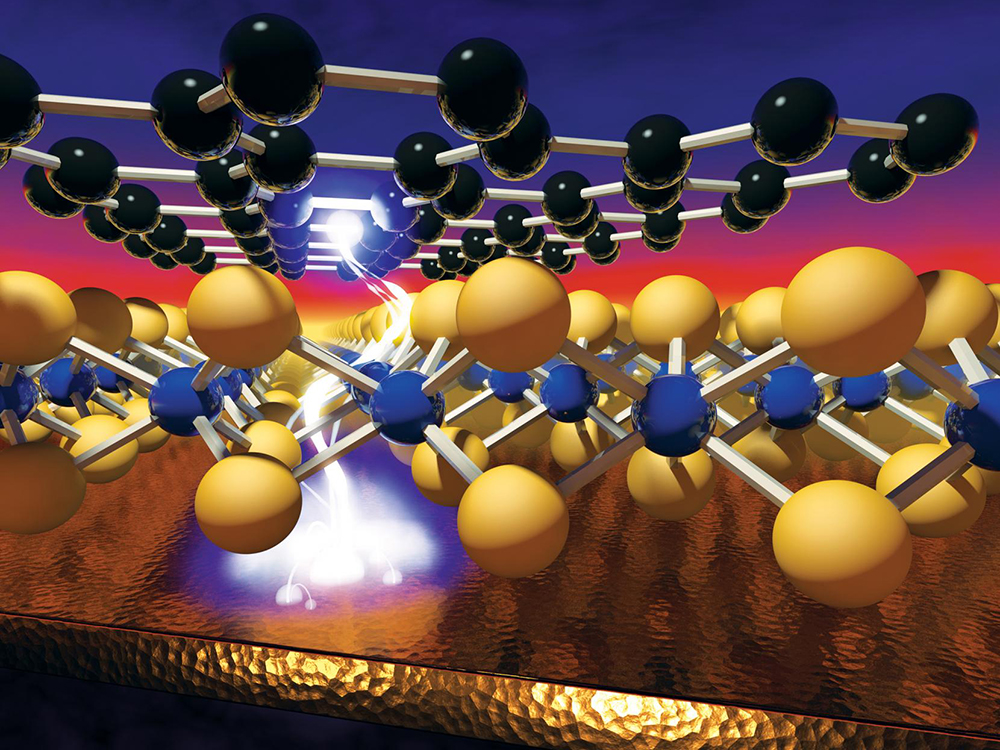
Lying at the interface between chemistry, physics, chemical engineering, electrical engineering, mechanical engineering, and materials science and engineering, the study of electronic, magnetic, and optical properties of materials has broad applications to microelectronic devices, communications, phononic and photonic devices, recording, and others.
Associated Graduate Program Faculty
Deji Akinwande
Carbon-based nano electronics, wireless flexible electronics, medical electronics.
Sanjay Banerjee
MOS and nanostructured microelectronic device modeling; heterostructure microelectronic devices; ultra-shallow junction technology and process modeling.
Michael Becker
Nanoparticles and nanomaterials for electronic interconnects, linear and nonlinear photonic materials and devices, and micro-mechanical actuators; optical signal processing using various types of nonlinear and modulation optical devices.
Alex de Lozanne
High temperature superconductors and colossal magnetoresistance phenomena studied using scanning probe microscopy.
Ananth Dodabalapur
Organic transistors and circuits; conjugated organic and polymer semiconductor-based chemical and biological sensors and sensor circuits; organic displays; organic laser and photonic crystal laser physics; organic memories and hybrid organic-silicon circuits and systems.
John Ekerdt
Surface, growth and materials chemistry of metal, dielectric, ferroelectric, and polymer films and silicon nanostructures; kinetics and chemistry of biomass conversion to hydrocarbon products.
Donglei Emma Fan
Fabrication, characterization, manipulation, and assembly of semiconductor, 2D, plasmonic, and bioenabled plasmonic-photonic hybrid materials for optoelectronics, active and reconfigurable devices, ultrahigh sensitive high-speed molecule detection and controlled release.
John Goodenough
Physical properties encountered at the transition from magnetic to metallic behavior in transition-metal oxides; thermoelectric materials; high pressure synthesis and characterization.
Tanya Hutter
Emerging molecular sensing technologies, materials, methods and devices for applications in environmental and industrial sensing, homeland security and medical diagnostics; nanomaterials, microfabrication, surface chemistry, nanophotonics, optical sensing, waveguides, fiber-optics, spectroscopy, electrochemistry.
Gyeong Hwang
First principles-based multiscale modeling; synthesis-structure-property relationships of nanostructured materials; surface and interface chemistry; defect and dopant structure and dynamics; semiconductor processing.
Keith Johnston
Colloid and interface science; materials chemistry; magnetic/optical nanocrystals for imaging and therapy in atherosclerosis and cancer.
Brian Korgel
Synthesis of nanostructured materials, fabrication of devices based upon these materials, and study of their properties with a focus on investigating size-tunable material properties, and the rational self-assembly and fabrication of nanostructures with atomic detail. Applications include microelectronics and photonics, spintronics, coatings, sensors and biotechnology.
Kenneth Liechti
Deformation and failure mechanisms in multilayered materials and structures using a combination of experimental and numerical stress analytical techniques; nanoindentation of ultra thin films and self-assembled monolayers; mechanics of adhesion and friction; interfacial fracture mechanics microelectronics packaging.
Jung-Fu Lin
Novel materials properties (superhard, superconductors, energy storage, two-dimensional materials; new optical, X-ray, and high-pressure techniques for materials analysis.
Nanshu Lu
Mechanics of thin films on compliant substrates, mechanics of flexible electronics with extreme deformability and compliance, mechanics at bio-electronics interfaces, development of novel bio-integrated soft electronics for cardiac, neural and epidermal applications.
Chih-Kang (Ken) Shih
Quantum control of condensed matter systems; engineering materials with atomic precision to control system dimensionalities at different length scales; nanostructures with length scales at which the interplay of electronic, photonic and spin degrees of freedom result in novel material properties; semiconductor nanostructures, metallic thin film nanostructures, plasmonics.
Huiliang (Evan) Wang
Development of nanomaterials, organic materials and electronics materials for advanced neurotechnology applications.
C. Grant Willson
Block Copolymer Nanolithography; Materials for double Exposure Lithography; E-Beam Resists; Immersion Lithography; Non-linear optical Materials.
Edward Yu
Wide bandgap semiconductors for electronics and optoelectronics; spin-based semiconductor devices.
Guihua Yu
Self-assembled nanosystems for flexible electronics and optoelectronics; hybrid inorganic-organic nanomaterial systems for functional interfaces with biological systems.
Yuebing Zheng
Nanoscience and nanotechnology at the interfaces of photonics, fluidics, and molecular engineering. Interactions between light and matter at the nanoscale; nanomaterials and nano devices for disease diagnosis and therapy and solar energy; Molecular Motors, Molecular Plasmonics, and Plasmofluidics.
Jianshi Zhou
Design and synthesis of new electronic materials including superconductors, spintronic/orbitronic materials, thermoelectric materials, multiferroic materials and magnetoresistive materials.

